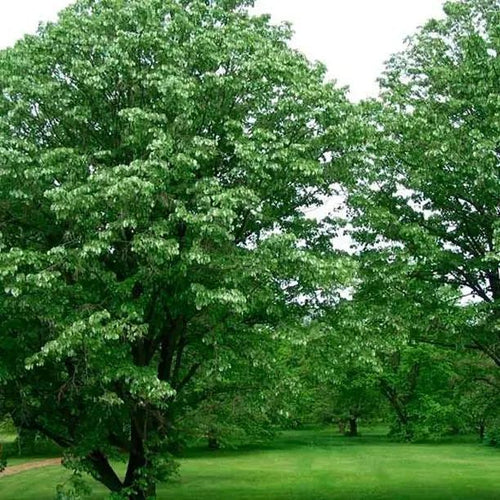Ready to Pleach Lime Trees
'Ready to Pleach Lime' tilia x euchlora is the best pleaching lime tree. When they're young, the heads of these trees are naturally "two-dimensional", and we have encouraged them to grow flat. Otherwise, they're the same as our normal Tilia x euchlora standards.
Technically speaking, these trees aren't yet pleached, but very little work is required for you to train the side growths onto pleaching wires set at the heights you want.
Browse our other Lime tree (Tilia) varieties, or our full range of trees.
Delivery season: Lime trees are delivered bareroot during late autumn and winter, approximately November-March inclusive.
Choosing a size: Small trees are cheaper, easier to handle and more forgiving of less than ideal aftercare, so they're best for a big planting project. If instant impact is your priority, or if you are only buying a few plants for use in a place where it's convenient to water them well in their first year, then you may as well use bigger ones. All our bareroot trees are measured by their height in centimetres above the ground (the roots aren't measured).
Features
- Soil: Any fairly well drained, mildly acidic to alkaline soil.
- Use: Wide avenues, parks, large gardens, coast
- Colour: Yellow-cream flowers in June-July, strong aroma
- Ready to train onto pleaching wires
- RHS Plants for Pollinators
- Bareroot delivery only: November-March
Growing Pleached Lime Trees
Extremely tough and undemanding, they thrive best on alkaline soils, but mildly acidic is fine. They're happy in heavy, compacted clay with paving around them: a town planner's best friend.
They tolerate partial shade well, and are recommended for exposed locations; they won't grow right on the beach, but tolerate salt winds. When established, they're drought tolerant.
If you would like to pleach them higher off the ground, simply clear off the side branches to the required height immediately after planting, and rub off all the buds that appear below the desired height (as the tree matures and its bark thickens, there will be less and less of these).
If you want them lower, it'll only take a couple of years for new shoots to develop into nice lateral branches. Simply rub off all the buds that you don't need, and keep the ones that are in the right place.
Planting Distances for Pleached Limes:
The closer they are, the denser more effective the screen is as a visual barrier. We recommend a spacing of 2 metres between trees as a default, 1.5 metres apart for an extra private barrier, and 2.5 metres apart to allow more light through.
When calculating how many trees are required, remember that you need to exclude half the planting distance at each end of the row before the first and after the last tree.
For example, if you are planting at a 2-metre spacing and have 10 metres to cover, you need five, not six trees, because the first and last tree are planted at the 1st and 9th metre marks, not the 0th and 10th metre (as would typically be the case with a hedge).
History & Trivia
Pleaching, or plashing (the latter term is more commonly used in the context of laying a hedge), is as old as hedgerow management, and as an ornamental feature it became really fashionable as a display of wealth in the gardens of stately homes in the 1800's, although it has been recorded since Medieval times. Limes, with their vigorous growth and beautifully flexible stems, are by far the most common tree for pleaching, with Hornbeam being a distant second, which is why we don't grow ready-to-pleach versions of it.
One of the UK's finest allC)es of pleached limes is at Arley Hall, Cheshire, which was planted by Rowland Egerton-Warburton's (1804-1891) gardeners in the mid-1800's.
Standard trees are measured by their girth in centimetres 1 metre above ground level: their trunk's waist measurement. Unlike sapling trees and hedge plants, standards aren't measured by their height, which will vary quite a bit both between and within species.
So, a 6/8cm standard tree has a trunk with a circumference of 6-8cm and an 8/10 standard has a trunk 8-10cm around. This measurement makes no difference to the tree's final height.
On average, standard trees are 2-3.5 metres tall when they arrive, but we cannot tell you precisely how tall your trees will be before we deliver them.

 Secure, One-Tap Checkout
Secure, One-Tap Checkout
 Hand Picked, Delivered to Your Door!
Hand Picked, Delivered to Your Door! 1 Year Bareroot Guarantee
1 Year Bareroot Guarantee








